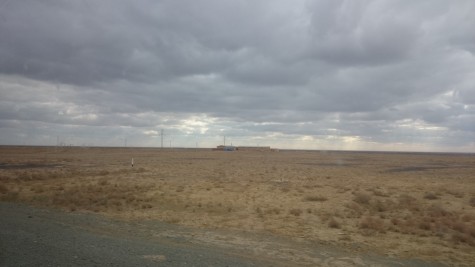This post is more about a story than pictures. During Stalin’s heyday, all art created in the Soviet Union had to abide by strict definitions of Socialist Realism. Basically, imagery had to depict victorious and triumphant workers. Furthermore, the style had to be literal. Abstract notions of triumphant workers or surreal color palettes were prohibited.
During this time, artists from other parts of the world were going crazy with their ideas. This is the same period as Cubism, Surrealism, and Dadaism. Via methods that I could not possibly imagine, an underground Soviet art scene developed and got their hands on pictures of art from elsewhere. Of course, they wanted to make their own such art, but were not allowed to in their environment. The result was hidden art. Whatever they created was stashed away and never seen by official eyes.
Igor Savitsky, a Soviet artist and ethnographer in Uzbekistan, decided that this hidden art was worth preserving. He started collecting it and became known as a “garbage man” for his interest in what was, effectively, trash art. Some 90,000 items and 80 years later, however, his trash has become treasure. Literally in the middle of nowhere, is the Savitsky Museum, home to Igor’s eccentric collection. We had to drive three hours from Khiva to a collection of huts known as Nukus to reach it. Our entire trip consisted of looking at the scenery above, taken from the car.
It kind of makes sense, since Nukus is probably the last place anyone would look for anything. Only a small fraction of the collection is actually on display, owing to the size of the collection and the small size of the museum. Most noticeable is that very few of the pieces would be considered by westerners to be particularly controversial or risque. Most of them are just, well, paintings. They just don’t fit into the box of Stalinist paintings. A painting of a blue cow, for example, landed its artist in a gulag for ten years, simply because cows aren’t blue in real life.
The museum didn’t allow pictures, which is why you’re not seeing anything. I’m sure you can Google “Savitsky Museum” and see what’s available. It felt like part time capsule and part enormous middle finger directed in Stalin’s direction.

 Español
Español
I couldn’t sleep and have been reading your blog since 4:30 am. This entry is the most striking and moving. It might be my hormone treatments, or you might have struck upon a genius way to tell this story. Either way, I’m crying and feeling very grateful for you telling this story. The blue cow artist is a bad ass.
You’re not alone. The Belgian guy in the cab also said that the museum “touched him.”
http://www.nytimes.com/2011/03/08/arts/design/desert-of-forbidden-art-igor-savitsky-collection-in-nukus.html?pagewanted=all
https://twoyeartrip.com/blog/wp-content/uploads/2014/10/P9213220-714×847.jpg